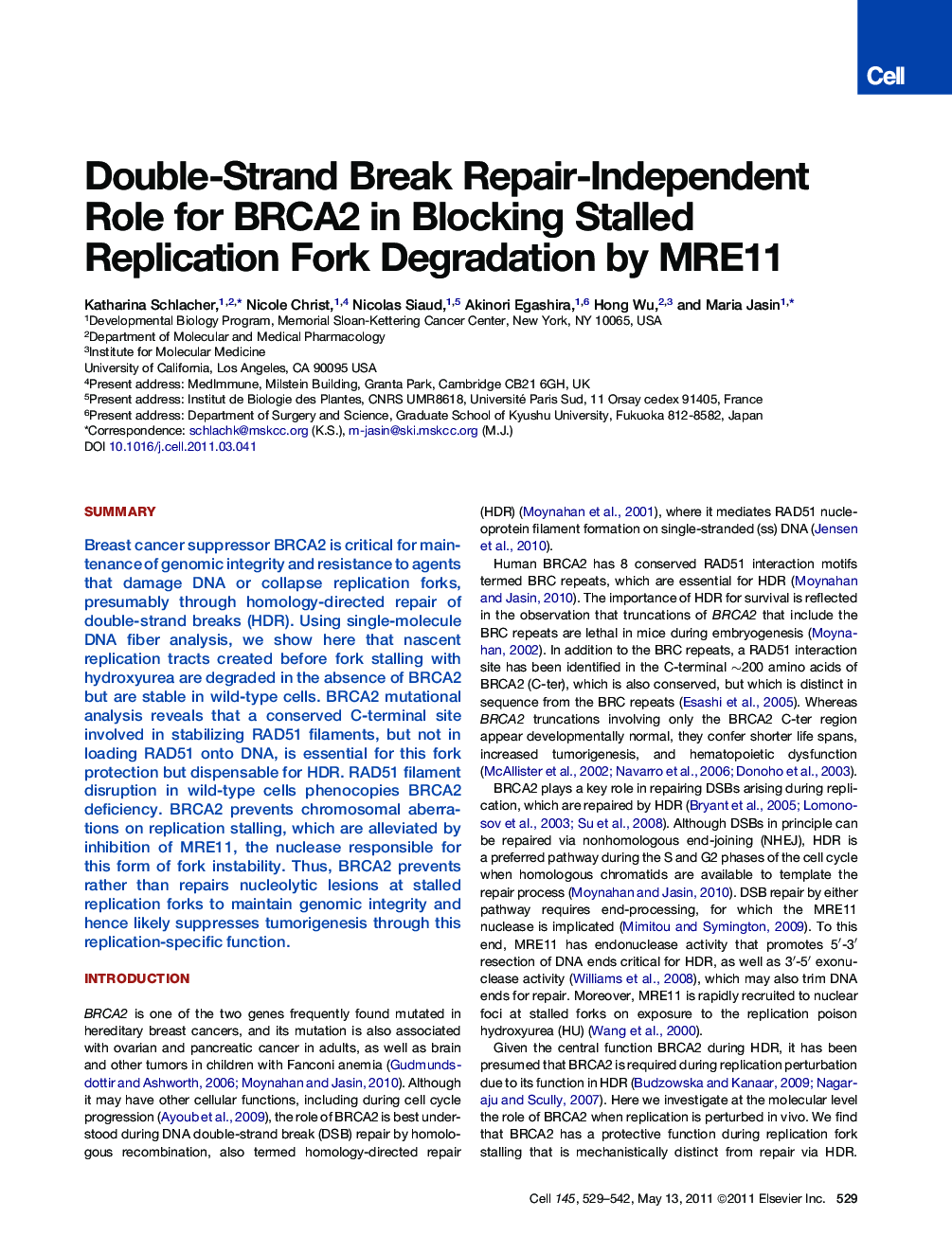| Article ID | Journal | Published Year | Pages | File Type |
|---|---|---|---|---|
| 2035848 | Cell | 2011 | 14 Pages |
SummaryBreast cancer suppressor BRCA2 is critical for maintenance of genomic integrity and resistance to agents that damage DNA or collapse replication forks, presumably through homology-directed repair of double-strand breaks (HDR). Using single-molecule DNA fiber analysis, we show here that nascent replication tracts created before fork stalling with hydroxyurea are degraded in the absence of BRCA2 but are stable in wild-type cells. BRCA2 mutational analysis reveals that a conserved C-terminal site involved in stabilizing RAD51 filaments, but not in loading RAD51 onto DNA, is essential for this fork protection but dispensable for HDR. RAD51 filament disruption in wild-type cells phenocopies BRCA2 deficiency. BRCA2 prevents chromosomal aberrations on replication stalling, which are alleviated by inhibition of MRE11, the nuclease responsible for this form of fork instability. Thus, BRCA2 prevents rather than repairs nucleolytic lesions at stalled replication forks to maintain genomic integrity and hence likely suppresses tumorigenesis through this replication-specific function.PaperFlick To view the video inline, enable JavaScript on your browser. However, you can download and view the video by clicking on the icon belowHelp with MP4 filesOptionsDownload video (14027 K)
Graphical AbstractFigure optionsDownload full-size imageDownload high-quality image (277 K)Download as PowerPoint slideHighlights► BRCA2 protects stalled replication forks from nucleolytic degradation ► RAD51 filament stabilization by BRCA2 C-ter separates fork protection from HDR ► Replication stalling of forks unprotected by BRCA2 causes genomic instability ► MRE11 inhibition prevents fork degradation and reduces resultant genomic instability
